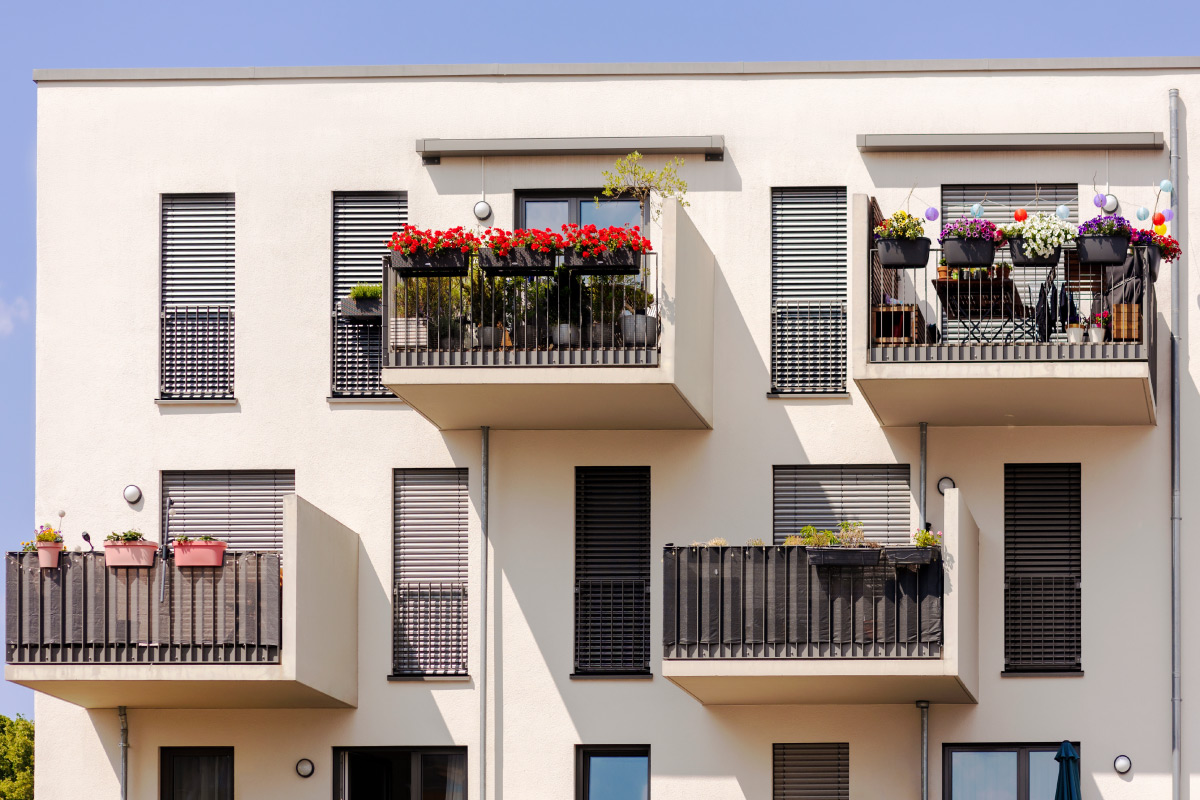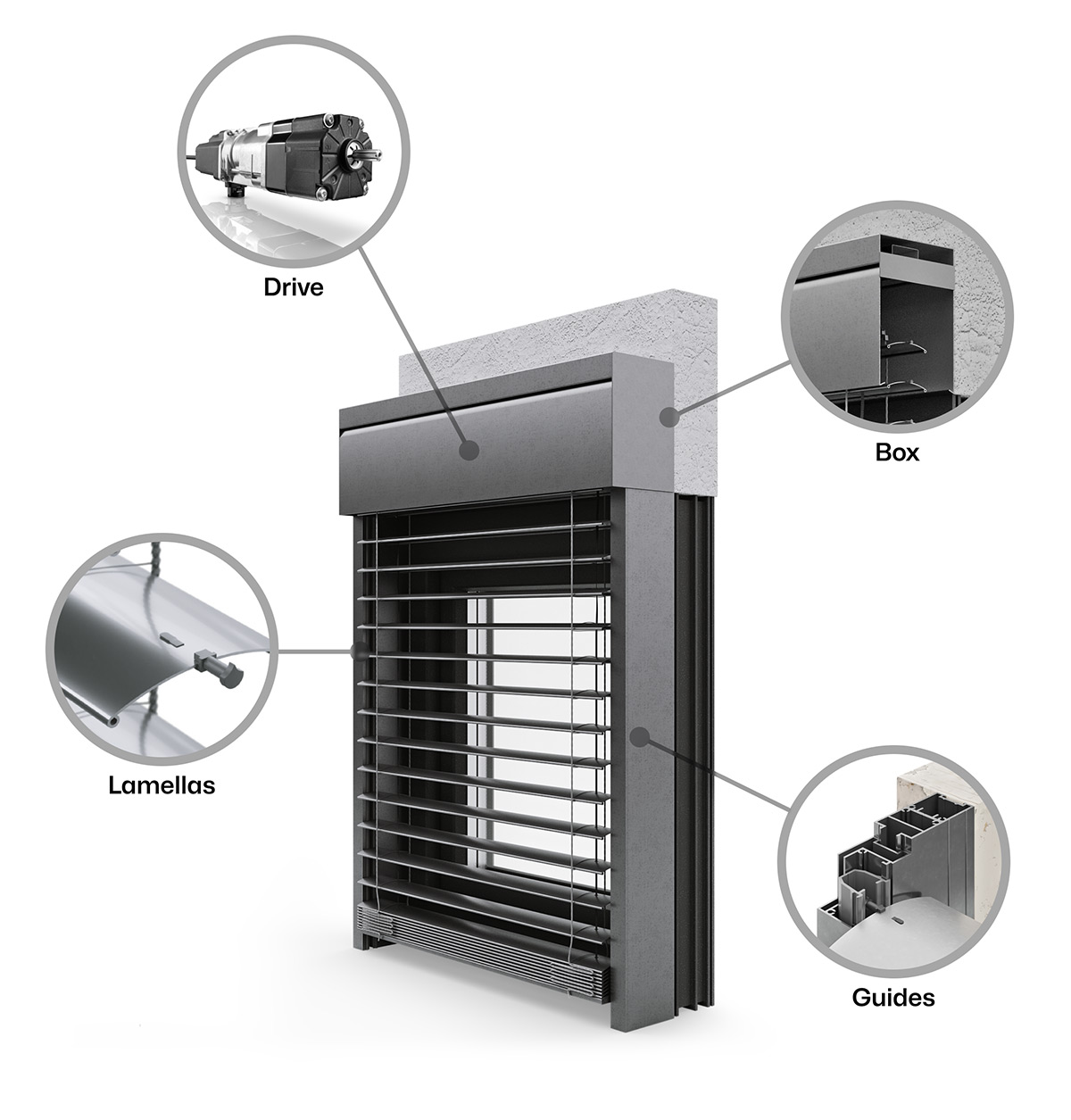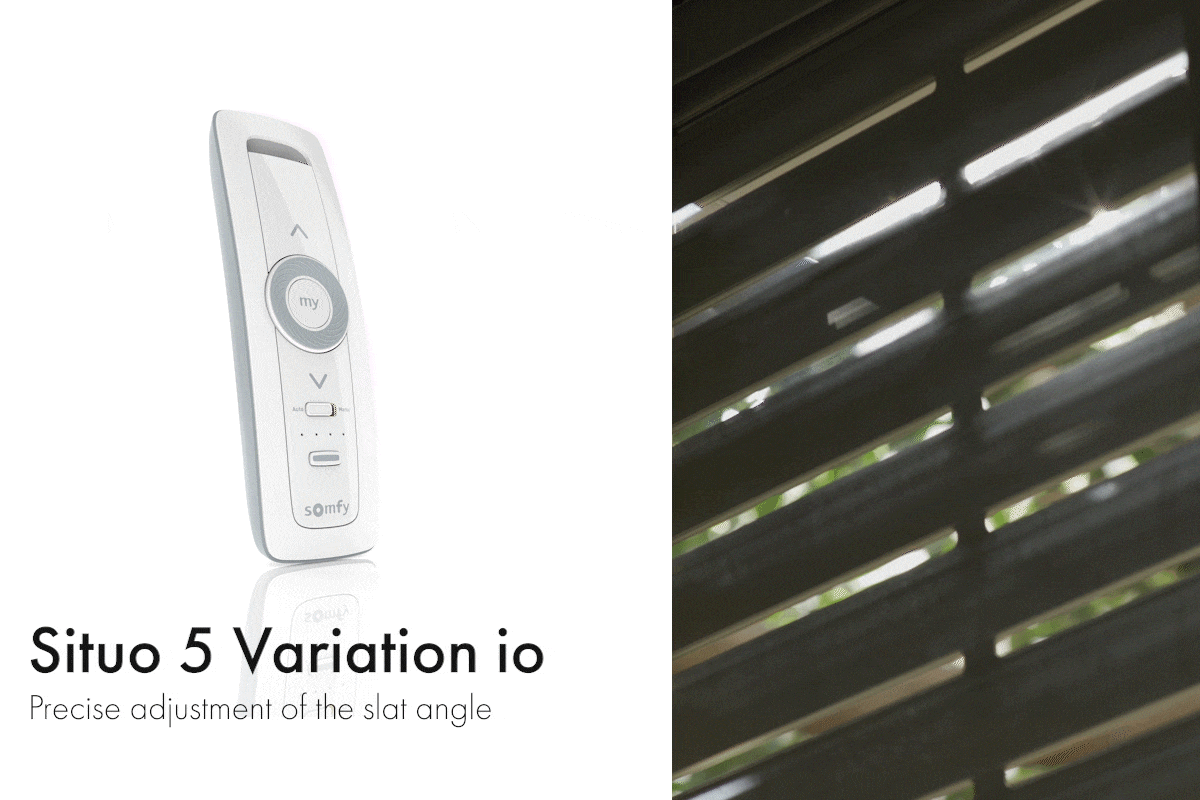08 January, 2024
Venetian blinds

People have become accustomed to Venetian façade blinds as a solution dedicated solely to modern office buildings with large glazing areas. However, installing them is increasingly becoming an option for ordinary houses and flats. What exactly is the purpose? Is it worthwhile? Let's find out.
The design of Venetian façade blinds is relatively simple. There are four main components:

The first component is the Venetian blind curtain, which, figuratively speaking, is made up of parallel slats connected by special cords that rotate them around their axis to varying degrees. They can look similar to a roller blind curtain when positioned vertically. When set horizontally, they are almost invisible from the interior. Alternatively, they can fold and raise to retract into the box above the window. Blinds can have slatted guides on the sides.
Although such blinds may resemble roller blinds, no such thing as anti-burglary Venetian blinds exist in reality. Their design is too fragile for that, and as discussed later in the text, you should expect different functionality from Venetian blinds.
The box is installed in various places by the window. The most commonly used ones are lintel and top-mounted, also displayed in the catalogue. Both general façade blind systems can have boxes visible on the building or hidden under the plaster.
Almost every modern solution today features motors responsible for the angle of the lamellas and their raising and lowering. It is a far more convenient solution than the classic cranks.
The final component, the guides, ensures that the blind armour moves safely and stays in place.
The use of façade blinds is about user comfort. The comfort consists of specific goals, such as:
Do you have to use a different type of façade blind for each? Fortunately, no. The advantages and disadvantages of façade blinds are more or less similar across all systems, although each focuses on different priorities.

Covering systems, such as standard external blinds, are all about controlling the intensity of light. It is made of electromagnetic waves with different properties depending on the wavelength. Some of it carries a lot of heat, some is low-energy visible light, and some is UV radiation, which is something very harmful.
The lamellas can block out harmful or excessive solar radiation. The same is provided by fitting an external roller blind but differently.
Intense sunlight does not have to be blocked in its entirety, as a roller blind armour does. The unique functionality of Venetian façade blinds lies in the fact that a thermal barrier develops without blocking the interior lighting: heat and UV rays stop on the lamellas. Only the "good" light enters, and its intensity is determined by the lamella angle.
The technical parameters of façade blinds translate into what they look like. An example of this is the shape of the lamellas. Developers most often opt for two types of lamellas:
Adjusting the incoming light with the C-shaped lamellas does not allow for complete interior darkening, although it offers the broadest scope of adjustment possible due to the lamellas turning in both directions. You choose façade blinds with Z-shaped lamellas to darken the interior and improve the sound insulation. The latter feature is debatable, and no tests concerning how much, if at all, the blinds can reduce external noise.
The advantages of façade blinds in terms of typical aesthetics are a subjective matter. However, it is difficult to deny the elegant character of high-quality products. Modern blinds harmonise particularly well with contemporary minimalist architecture.
Lowering Venetian façade blinds isolates you from the world. Setting them at a slight angle, depending on your elevation, is also very effective. Then you can see the world, and the world cannot see you.
Using external blinds always has the same positive effect. Depending on what you do in a particular location, you should expect different specific features there. In other words, Venetian façade blinds and their function change depending on where you use them.
In the house, your key concern is reducing interior heat and light. Privacy is not insignificant. Fewer UV rays increase the lifespan of window frames. If you are disturbed by rain or water droplets hitting large windows, keeping them on the lamellas will significantly reduce the noise.
The best office uses include controlling the sun so that it does not disturb work by shining on computer screens and overheating the interiors, which comes with the cost of air conditioning. Correct positioning of the lamellas keeps the interior cooler but not dark. Businesses also like their prestigious appearance.
The fundamental factor here is light regulation, which includes heat. Relatively low costs for many solutions and the possibility of placing them on large windows are vital advantages.
Shopkeepers appreciate blinds for their ability to block UV rays, which can be particularly damaging to plastics commonly used in displays. Additionally, blinds help create a comfortable atmosphere for customers.
Venetian façade blinds, among other places, appear in warehouses. They make it easier to take care of the appropriate interior temperature, which is much more than just a matter of comfort in storage. Access to natural light also plays an important role here.
There are a lot of solutions to choose from, as Venetian blinds are relatively simple window covers. They do not require much.
In the universal BASIC system, you can adjust the handles, top rail, and grips. They fit anywhere. They also support monobloc guides.
RAFF-i means simple and quick installation. The entire weight of the blind rests on the guides attached directly to the window frame or wall. It provides the possibility of using offset guides, which insulate the space between the box and the lintel.
SKEF is characterised by its box made entirely of extruded aluminium and cut at a 45-degree angle on the outside. This shape is popular in blind and shutter systems, harmonizing the building aesthetics when both window covering types are present.
The CLEVER BOX can be fitted with a mosquito net to protect the interior from insects. It is attached to the inside of the covering, and when rolled up, it retracts entirely into the box.
Although blinds are not a way to tackle cold or noise, some can deal with these inconveniences quite effectively. Such is the case, for example, with the ROKA TOP 2 SHADOW system, constructed entirely of insulating material. It is equipped with stabilising consoles, window braces, and fastenings, resulting in a large yet stable structure permanently connected to the window and wall.

Blinds can be controlled using muscle power, but it is much better to rely on electric drives. Just install a suitable motor in the box, and the blinds will operate without exertion.
There are two basic approaches:
You may not want to dismiss wired control out of hand. Mounting a convenient remote control on the wall to regulate the position of the lamellas is a handy solution. Nevertheless, radio control is preferable.
Façade blinds with two-way communication are the latest and most convenient option in every respect. The user is constantly informed of the exact position of lamellas and can precisely control it from a smartphone.
Meticulous adjustment of lamellas is also possible with specialised remote controls paired with drives with the appropriate functionality. Most people never raise Venetian blinds and only change their angle, making this functionality essential for managing light and heat and interior illumination. Sunlight reflects off lamellas, diffuses, falls on the floor or hits the ceiling, creating each time a different atmosphere.

Choosing the right Venetian blinds is not difficult at all, and the cost is certainly not excessive, even when compared to budget roller blinds. With this choice, you get an effective way of dealing with excess light and heat, and on top of that, you get something that can look phenomenal in your home. High-quality Venetian blinds offer a multitude of vibrant colours.
Moreover, it is also a breeze of modernity. Blinds can be integrated into a smart home system and remotely managed. They can even control themselves. Their accessories include sophisticated weather stations, the so-called weather sensors, with which you can protect your blinds from the wind and make them react to excess light and heat by themselves.
Last but not least, there is something for the environmentally aware: blinds can use solar drives, which require only sun to operate. They do not consume electricity, so there is no need to run cables.

Hotline: +48 539 697 779 Connection fee in accordance with the operator`s price list.
Eko-Okna S.A.
Kornice, ul. Spacerowa 4
47-480 Pietrowice Wielkie
NIP: 6391813241, KRS: 0000586067